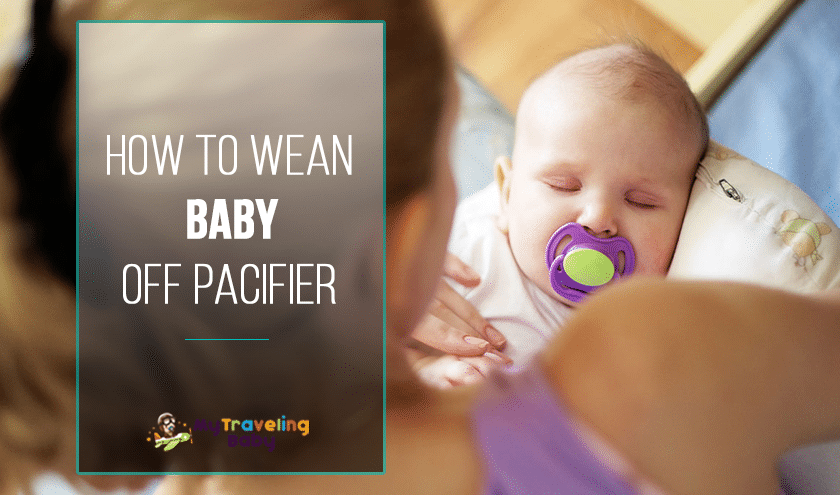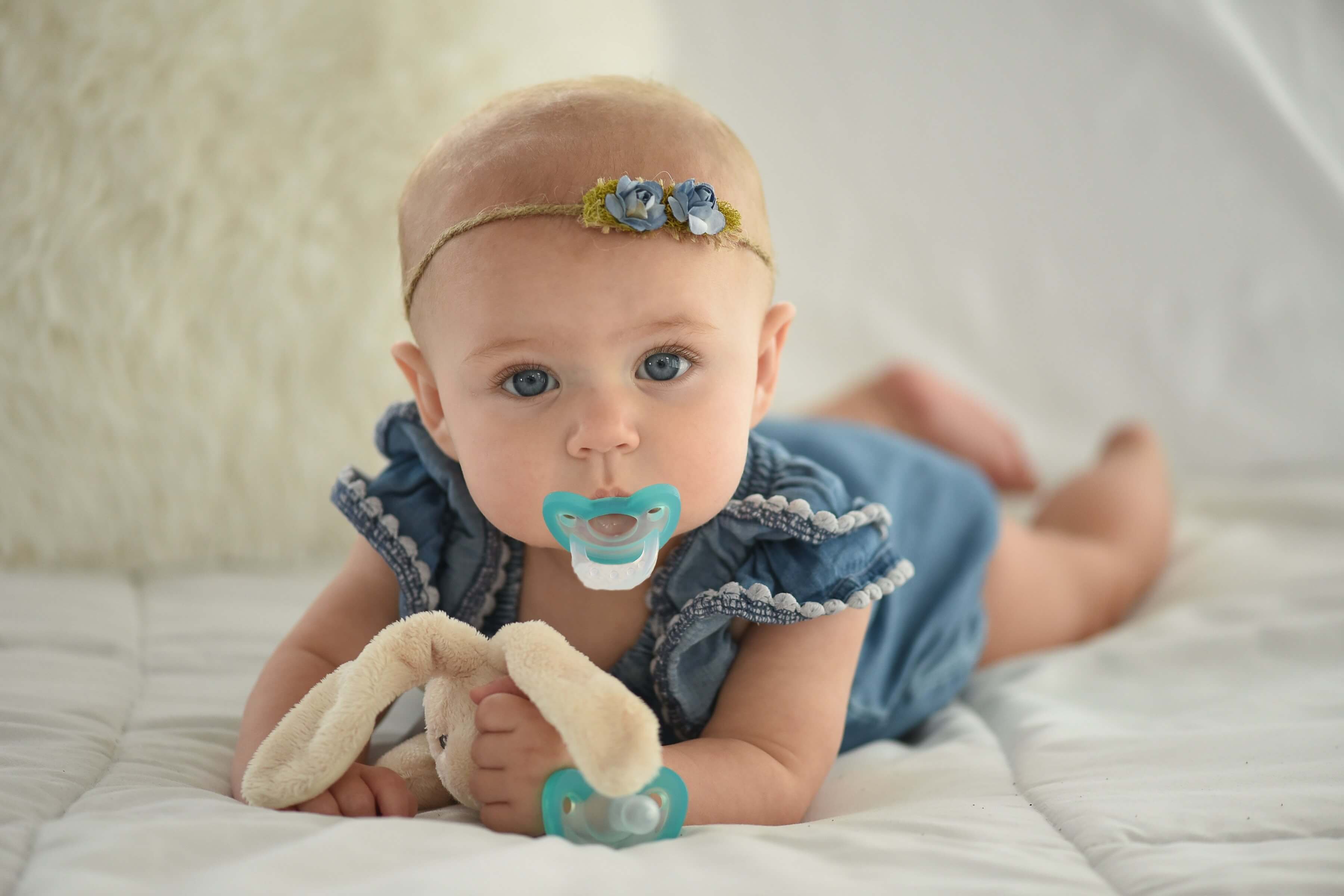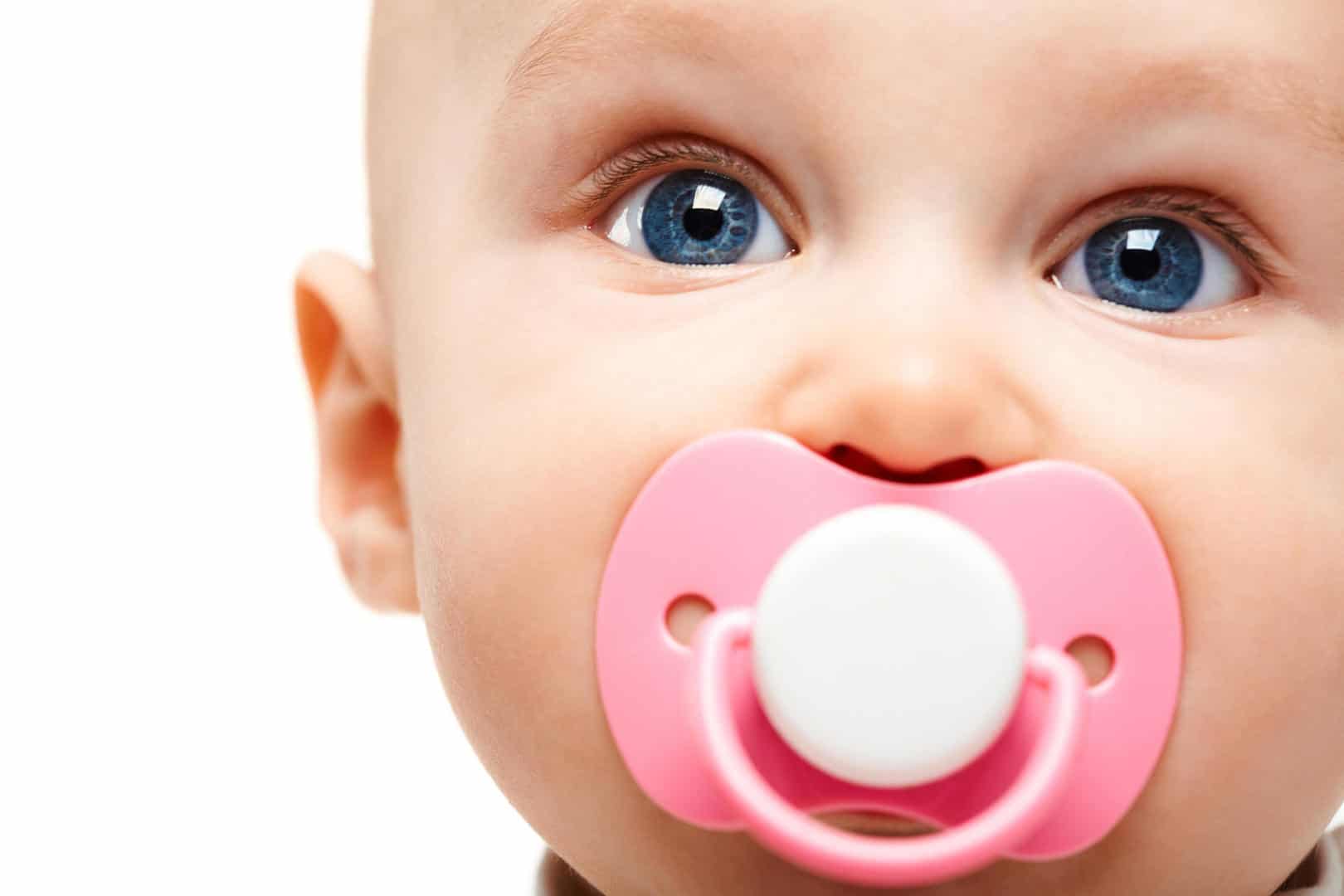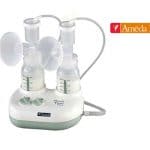
Do you think that it’s finally the time for your baby to part with the pacifier? Are you wondering how to take away pacifier without causing tantrums and tears?
Although these things can be true life-savers for parents with screaming toddlers and fussy babies, they gradually become more of a nuisance and less of a helpful tool as the kid gets older. While most children wean themselves, some need additional help from their parents.
In this article, we’ll discuss the advantages and disadvantages of binky use, when is the best time for getting rid of pacifier, as well as how to approach this issue.
The Advantages of Binky Use
-
Pain Relief
Baby pacifiers are capable of offering pain relief for babies. This is especially true for the babies undergoing procedures that cause discomfort, such as routine immunizations.
-
Sleep
This one is a no brainer – a binky can calm the baby down and help her fall asleep.
-
Lower Risk of SIDS
SIDS, or sudden infant death syndrome, is undoubtedly one of the scariest things out there. The AAP (American Academy of Pediatrics) suggest using a binky at the onset of sleep – it’s an action that lowers the risk of SIDS. Moreover, a couple of studies have confirmed that there’s a correlation between baby pacifiers and safe sleeping, although reasons are not known yet.
-
Reduced Cavities
Children who are prone to sleeping with a bottle are also prone to developing a bottle rot. The reason behind this is in the sugar – it pools in the child’s mouth and causes tooth decay by soaking the teeth. This is something that doesn’t happen with pacifiers.
-
Helpful with Reflux
When a baby uses a binky, she produces more saliva. Saliva is well-known as a natural neutralizer of stomach acidity, which can be quite helpful with infant reflux.
-
Disposable
One of the best things about pacifiers is that they’re disposable – you simply throw them away when they’re not needed anymore. In fact, a binky needs to be replaced every two months for safety and hygienic purposes.
The Disadvantages of Binky Use
-
Dental Issues
According to the American Dental Association, both the binky use and thumb sucking can cause issues with the proper alignment of teeth. They also cause changes in the growth of the mouth, which usually leads to under-bite or over-bite.
-
Speech Delay
A couple of studies have found that children who suck their fingers or use pacifiers after the age of three are more likely to develop speech disorders. This is because prolonged sucking can cause a change in mouth muscles, which, in turn, hinders speech development.
-
Dependency Problems
Some kids are prone to getting too attached to their pacifiers (which makes getting rid of paci so tricky in some cases). Although it’s beneficial in the beginning, having a binky present each time the kid goes to bed can be quite problematic later on.
-
Safety
Once it becomes discolored or worn out, a pacifier presents a severe risk to the baby’s health. Parents need to make sure that the binky is large enough and they must replace it the moment it starts falling apart.
Best Time to Ditch the Binky
There’s a debate over the precise timing of this, though most experts agree that a pacifier should be ditched by the age of one. It’s something that needs to be done in order to prevent speech disorders caused by overuse.
The latest time at which the binky needs to be eliminated is the age of four. However, waiting so long is almost guaranteed to result in irreversible, adverse effects, which is why taking away pacifier is best when done earlier.

How to Get Rid of Pacifier
If it’s time for your child to ditch the binky, follow these steps to help him or her do so with minimal tears and tantrums:
-
The Right Timing
Weaning pacifier should not be started at the same time as a stressful event, like moving into a new hour or starting daycare. Wait for these events to be over until taking the binky away.
-
Limiting the Use
The easiest way to start the process is by merely limiting the daytime use of the baby pacifier. For example, you can restrict the use by letting the kid use it only when one of the parents is at home.
Slowly work your way up by allowing the child to use the pacifier only at bedtime and naptime. If that goes well, you’ll eventually be able to phase it out completely.
-
Using a Transitional Object
Try to offer your baby a transitional object in place of the pacifier. This could be a new blanket or a new toy, such as the stuffed animal. Try to find something that the kid will be able to take with him or her to bed.
-
Use Praise
Make sure to get your child to know that choosing not to use the binky is incredible. Complement the kid and offer small rewards, such as favorite (but healthy) snacks.
-
Make it Unappealing
Another thing you could try is making the use of binky unappealing. Dipping the pacifier into white vinegar will make it distasteful and the child will soon stop using it.

Conclusion
Although getting rid of pacifier sounds like something quite challenging, it can be done – you just need a little patience and creativity. As you can see from above, using this object beyond a certain age can be dangerous and cause various speech, dental, and safety problems. Continued use can also lead to dependency problems and has also been linked to higher rates of ear infections.
Make sure to keep the whole process of weaning positive and never use negative reinforcement in case your kid resorts back to the binky. Punishing and scolding create distrust, stress, and fear, which often lead to regression.



